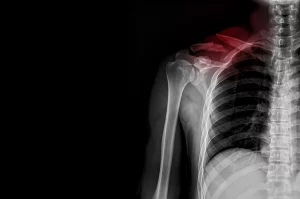As Hurricane Ian slams Florida, a new study finds that many hospitals positioned near the Gulf and East Coasts are vulnerable to severe flooding from such storms.
Ian struck the West Coast of Florida Wednesday and careened toward the East Coast. It’s then expected to veer north.
Researchers found that even relatively weak hurricanes pose a serious threat of flooding to hospitals along the two coasts. While a Category 1 storm produces minor damage, including to trees and power lines, a Category 4 storm causes catastrophic damage to homes with winds strong enough to tear off roofs. Click here for more on hurricane ratings.
The expected rise in sea levels due to climate change makes hospital flooding 22% more likely than in previous years, according to the report published Sept. 29 in the journal GeoHealth.
“We now have a better sense of which hospitals are likely to flood from a hurricane today and those that need to prepare for greater risks in the future,” said study co-author Dr. Aaron Bernstein, from Harvard T.H. Chan School of Public Health, in Boston.
“Hurricanes are expected to get more severe and may strike regions further north than in the past due to climate change,” Bernstein said in a school news release. “In places like my hometown of Boston, we can avoid crises that other hospitals have had to endure by learning from their experience and creating plans that build on best practices. But we must act now, before disaster strikes.”
For the study, the researchers identified 682 acute care hospitals in 78 metropolitan areas within 10 miles of the Atlantic and Gulf Coasts of the United States. These areas are home to just under 85 million people, or about one in four Americans. The investigators found that a Category 2 storm could flood half or more of the hospitals in 25 of the 78 cities they looked at.
The 10 areas most threatened by a Category 2 hurricane are:
- Miami-Fort Lauderdale-West Palm Beach, Fla.
- New York-Newark-Jersey City, N.Y.-N.J.-Pa.
- Boston-Cambridge-Newton, Mass.-N.H.
- Orlando-Kissimmee-Sanford, Fla.
- New Orleans-Metairie, La.
- Tampa-St. Petersburg-Clearwater, Fla.
- North Port-Sarasota-Bradenton, Fla.
- Jacksonville, Fla.
- Cape Coral-Fort Myers, Fla.
- Philadelphia-Camden-Wilmington, Pa.-N.J.-Del.-Md.
With sea level rise expected this century, the number of hospital beds at risk of flooding from a Category 2 storm has gone up by more than 90% in Baton Rouge, Virginia Beach, Corpus Christi, Philadelphia and Boston, the research team reported.
Recent storms damaged many hospitals. This study shows that even if hospital buildings aren’t flooded, the roads around them might be, making it harder or impossible for people to get care, or provide it. In 18 metro areas, a Category 2 storm could flood at least half of the roads within one mile of hospitals.
The study authors pointed to a New Orleans hospital as an example of how coastal hospitals and health systems can become more resistant to hurricanes. The Southeast Louisiana Veterans Health Care Center opened in 2016 to replace the VA Hospital and Charity Hospital after Hurricane Katrina. It was designed to keep running for seven days even if the city’s utilities and infrastructure were damaged. It has backup fuel supplies, on-site sewage treatment facilities, and enough space for up to 1,000 staff members and patients to stay inside during a storm.
More information
The Climate MD program at Harvard Chan C-CHANGE offers more on how hospital health care providers reduce risks to patients.
SOURCE: Harvard T.H. Chan School of Public Health, news release, Sept. 29, 2022
Source: HealthDay
Copyright © 2025 HealthDay. All rights reserved.

















